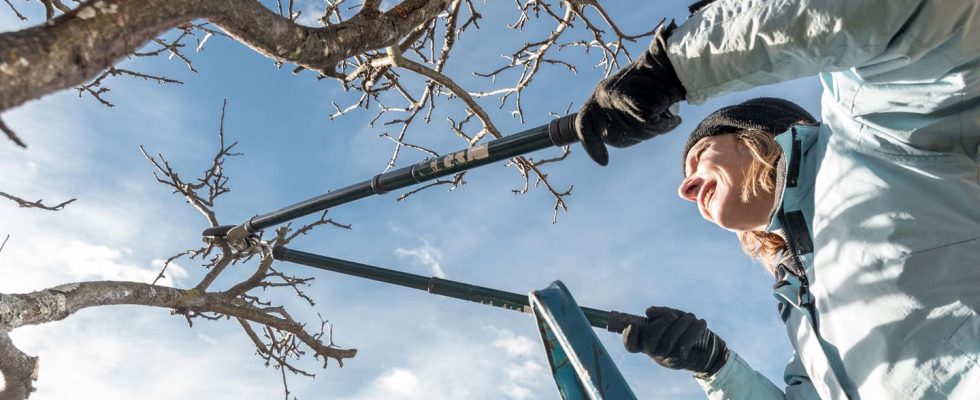series
Gardening tips
Shortening, airing, sowing: The 3 most important gardening tasks in February
In February the gardening season slowly but surely picks up speed. Fruit trees must be pruned so that the apples taste good in autumn. >> Click here for the article.
© HMVart / Getty Images
In February, many allotment gardeners slowly begin to get excited about the new season. To ensure that your own fruit and vegetable harvest in 2024 is not a failure, there are a few things you should tackle now.
The first snowdrops poke their white heads out of the ground in February. The buds of the impressive and colorful rhododendron are also getting thicker and thicker. In short: Spring sends the first tender messages and lures one or two allotment gardeners outside. And that’s good. Because in February there is a lot to do, especially for those who Fruit trees have in the garden. Also Perennials and hedges are looking forward to a little affection in the end of winter. You can find out in this article what other small but important tasks need to be done in February.
Gardening in February: The most important things in brief
1. Shorten fruit trees
The apples from the weekly market are delicious. But the ones from your own garden taste even better. And to ensure that it stays that way and that the harvest in the 2024 gardening season is not a failure, it should start in February Apple and pear trees to the so-called Conservation cut be set. This includes capping all of them Competitive instinctsthe cutting back of all vertical ones Water shots and the removal of overhanging fruit wood. And exactly in this order. If you are unsure, you should take a look at relevant specialist literature such as: “Everything about pruning” (Helmut Pirc) throw. The most important and indispensable helper for the waste is a high-quality one secateurs. If thicker branches have to be removed, it is better to use slightly more powerful (geared) pruning shears, like this one Fiskars model or a small one Pruning saw. Maintenance pruning is intended to slow down excessive growth and stimulate fruit set.
2. Aerate compost
Allotment gardeners should start working on their compost heap as early as February. Rain and other precipitation heavily compacted the rotted material around the turn of the year. For this reason, the compost should be thoroughly rearranged and thus ventilated. This stimulates the millions of microorganisms to become more active again. For the Loosen up and ventilate It’s best to use a spade or digging fork. There’s one here Spade fork from Spear & Jackson. Half-ripened compost can also be distributed and incorporated into the planned vegetable beds in February.
3. Prepare and sow the kitchen garden
Tomatoes and peppers are among the most popular vegetables among amateur gardeners. And they prefer to cultivate the nightshade family themselves from the seed to the ripe fruit. To ensure this is successful, the seeds can be sown in February. Important: Nightshade plants are cold cats and should be given plenty of warmth from sowing to harvest. A heated greenhouse is ideal (here is a miniature version) or Cold frame. Develop under a transparent hood tomatoes, chili or paprika but also looks great in pots or multi-pot pallets on the windowsill at home. With the right one potting soil Normally you only have to wait about ten days until the first cotyledons “see” the light of day. There’s one here Mini greenhouse for the windowsill with a transparent hood.
Transparency note: This article was first published in February 2022.
You might also be interested in:
This article contains so-called affiliate links. Further information are available here.



